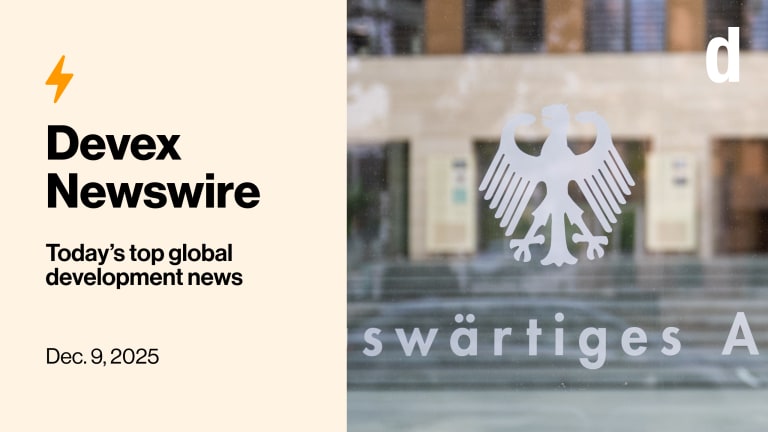
Germany’s development aid is shifting toward a more cooperative approach that emphasizes private-sector investment. Spearheading this change is the cabinet-level German Federal Ministry for Economic Cooperation and Development, or BMZ, which in early 2011 presided over the country’s largest aid reform in almost a decade.
One of the world’s largest bilateral donors, Germany is renowned not only for an impressive list of development NGOs and consultancies but also for its leading role in mainstreaming climate change issues into development cooperation. Since mid-2009, all new development projects in Germany have to undergo a so-called “climate check.”
Although debt relief has, for years, made up a majority of the country’s official development assistance, Germany is an important player in the field of technical cooperation; it is particularly known for building capacity around the globe. In 2011, the country’s largest implementing organization, the newly formed governmental Gesellschaft für Internationale Zusammenarbeit, or GIZ, was selected as a Devex Top 40 Development Innovator.
Navigating Germany’s landscape of aid organizations can seem daunting. For one thing, there are several development hubs: Bonn, often called the country’s development capital, hosts BMZ and a major share of international and German aid groups. Eschborn near Frankfurt, meanwhile, has served as headquarters for German Technical Cooperation, or GTZ, which became part of GIZ earlier this year. GIZ’s headquarters is split between Bonn, Eschborn and Berlin.
Also, Germany separates technical from financial cooperation; the former is led by GIZ and the latter by the German development bank KfW, which issues loans and grants.
This abundance of aid agencies scattered around the country has, for years, raised eyebrows in recipient countries and prompted criticism from aid effectiveness advocates. But things are changing: In January 2011, the country’s three largest development organizations – GTZ, Inwent and the German Development Service, or DED – merged to form GIZ, an enormous organization with roughly 17,000 staff that works not only with various German ministries, but also with the European Commission, United Nations and other institutions.
In fiscal 2011, BMZ expected to spend €6.2 billion, a 2.5 percent increase from the previous year. Roughly half of Germany’s budget goes toward bilateral ODA, while just over 10 percent each goes toward the European Development Fund, the World Bank Group, as well as businesses and civil society groups.
The Millennium Development Goals provide a strategic framework for Germany’s development cooperation, which focuses on six areas: good governance; education and training; health; rural development; the protection of the climate, the environment and natural resources; and economic cooperation.
Germany has been narrowing down its focus partner countries from 84 to currently 57. It has ceased programs in China, and instead focused more on sub-Saharan Africa, which receives roughly 50 percent of German ODA.
Public-private partnerships have become more frequent as BMZ, under Development Minister Dirk Niebel, seeks to boost German private sector investment in the developing world. The goal is to create “win-win” partnership between Germany and its development partner countries – which explains why Germans increasingly prefer the term “development cooperation” over the more traditional “foreign aid.”
Read more:








